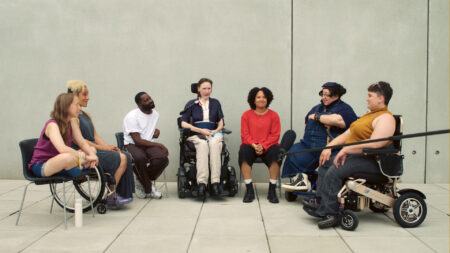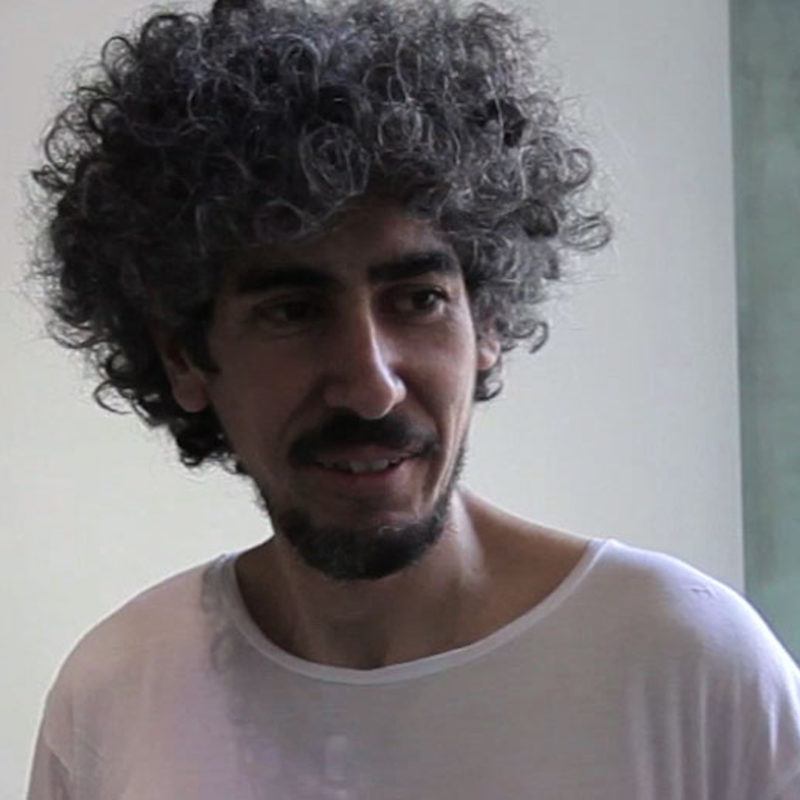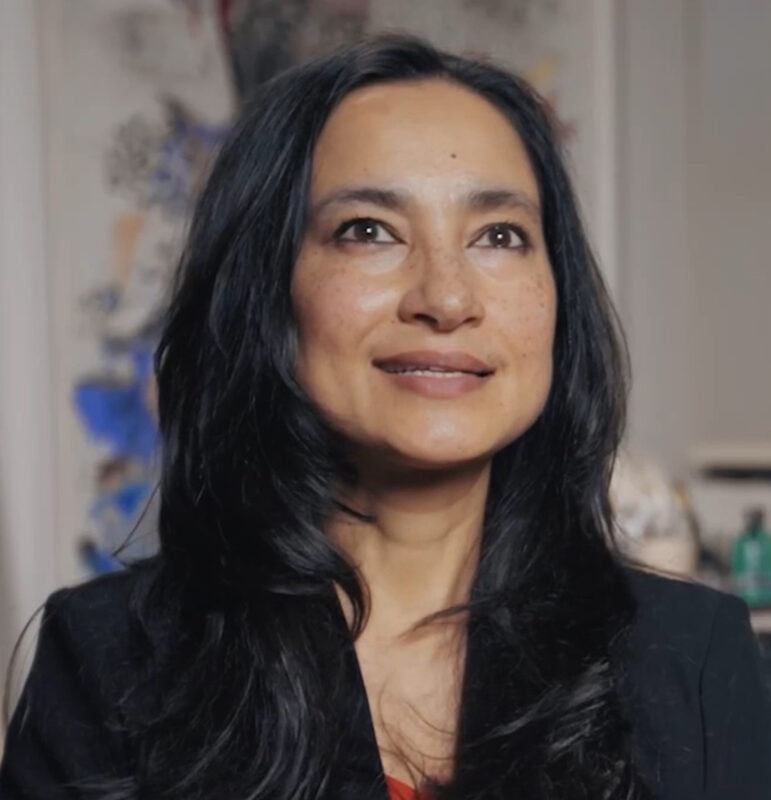Continue playing
(Time remaining: )
Play from beginning
Continue playing "{{ controller.videos[controller.getVideo(controller.currentVideo)].segmentParentTitle}}"
{{controller.videos[controller.getVideo(controller.currentVideo)].title}} has ended.
Diego Bianchi with Shahzia Sikander at the 13th Istanbul Biennial
For the 13th Istanbul Biennial, Diego Bianchi’s interactive installation, State of Spam, invites viewers to participate in various sculptures made of everyday materials. As Bianchi explains to Shahzia Sikander, he implements intentional rules—like removing one’s shoe (just one!) before entering the installation—that result in small humiliations, and poke fun at the unspoken code of conduct assumed in traditional gallery spaces.
“I like to think of the installation as a theatrical moment.”
Closed captionsAvailable in English, German, Romanian, Italian, Japanese, Korean, Chinese, Italian
Through the Art21 Translation Project, multilingual audiences from around the globe can contribute translations, making Art21 films more accessible worldwide.
Interested in showing this film in an exhibition or public screening? To license this video please visit Licensing & Reproduction.
Diego Bianchi was born in 1969 in Buenos Aires, Argentina, where he continues to live and work, making large-scale sculpture and installations. His immersive sculptural installations are constructed with found objects, drawing attention to the excess and waste of consumer culture.
Shahzia Sikander specializes in Indian and Persian manuscript painting, a traditional, technique-driven style that Sikander imbued with a personal context and history, blending the Eastern focus on precision and methodology with a Western emphasis on creative, subjective expression. In doing so, Sikander transported manuscript painting into the realm of contemporary art. Expanding the manuscript painting to the wall, Sikander also creates murals and installations, using tissue-paper-like materials that allow for a more free-flowing style. Utilizing performance and various media and formats to investigate issues of border crossing, she seeks to subvert stereotypes of the East and, in particular, the Eastern Pakistani woman.


